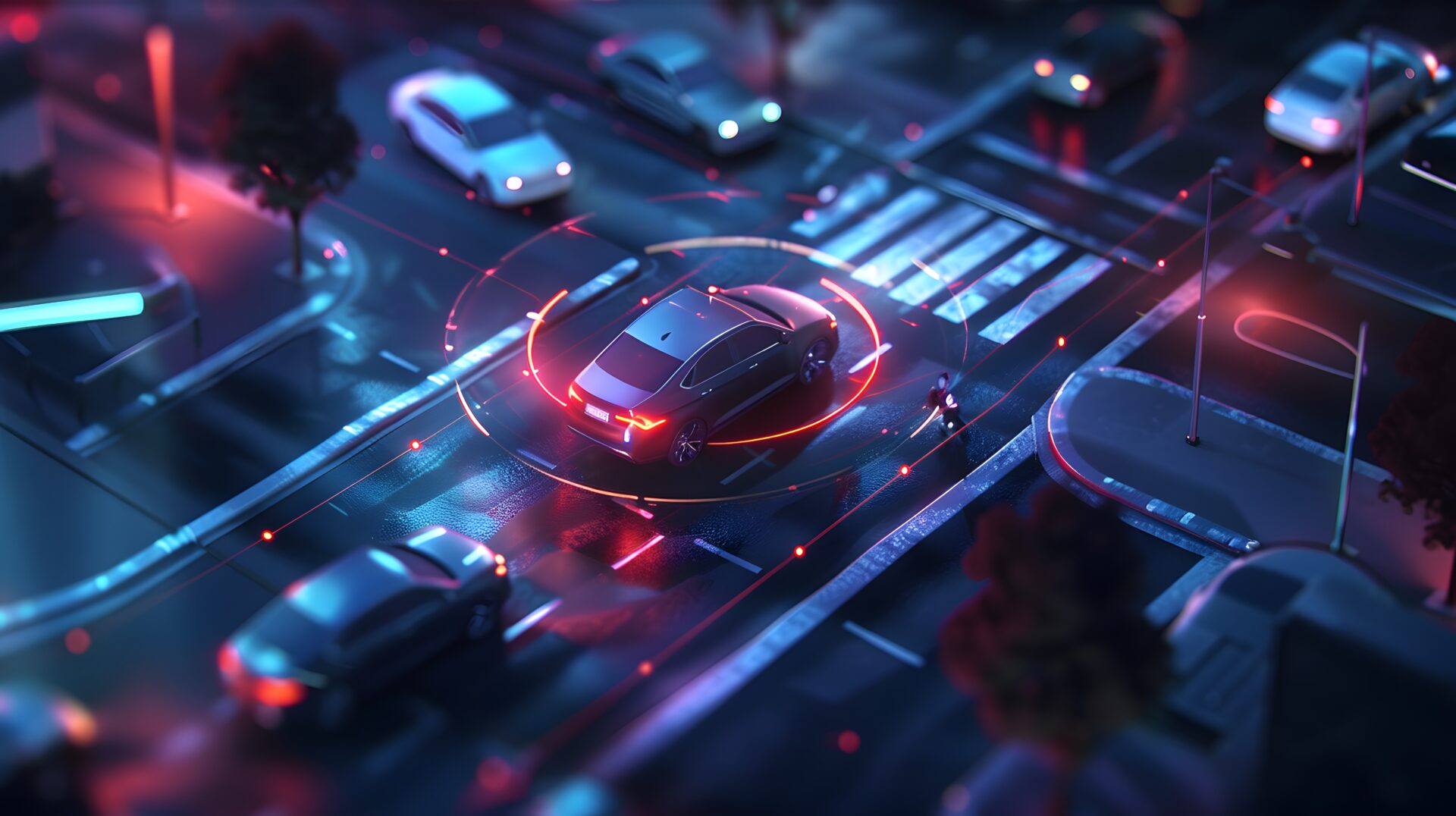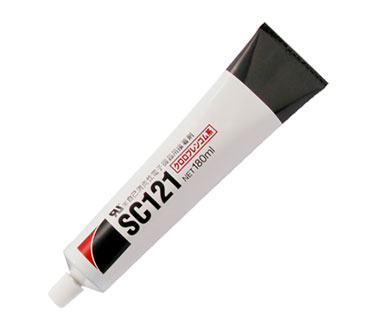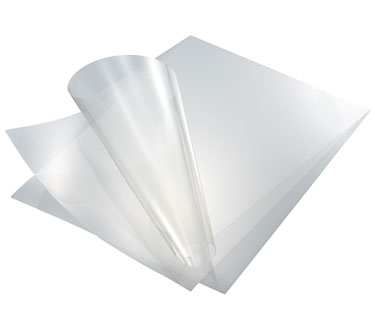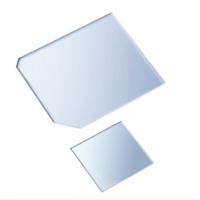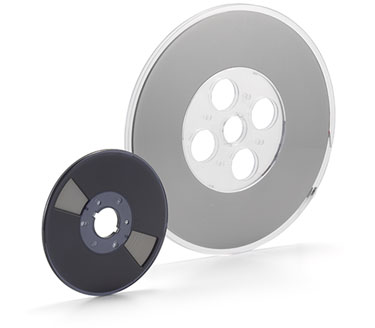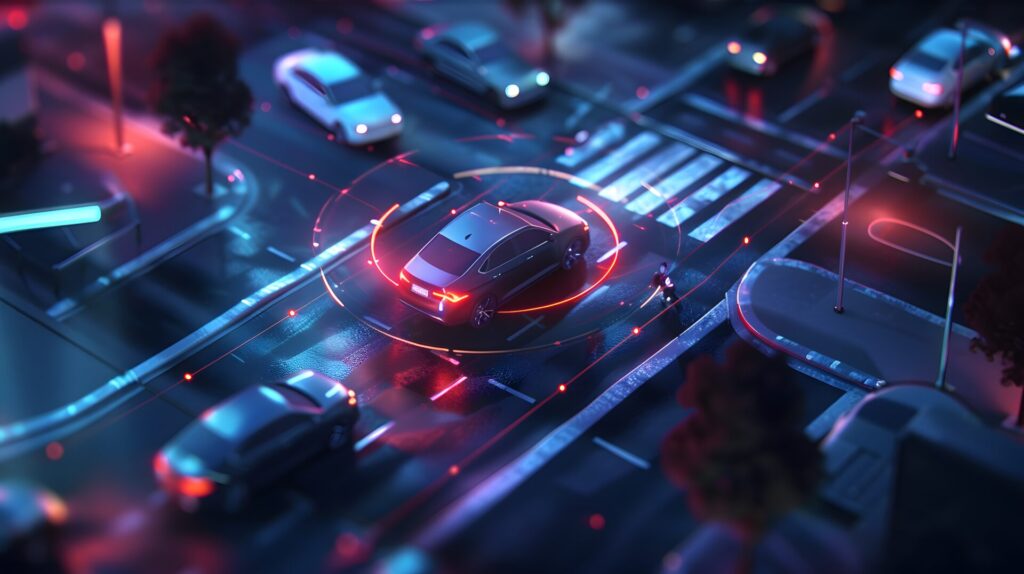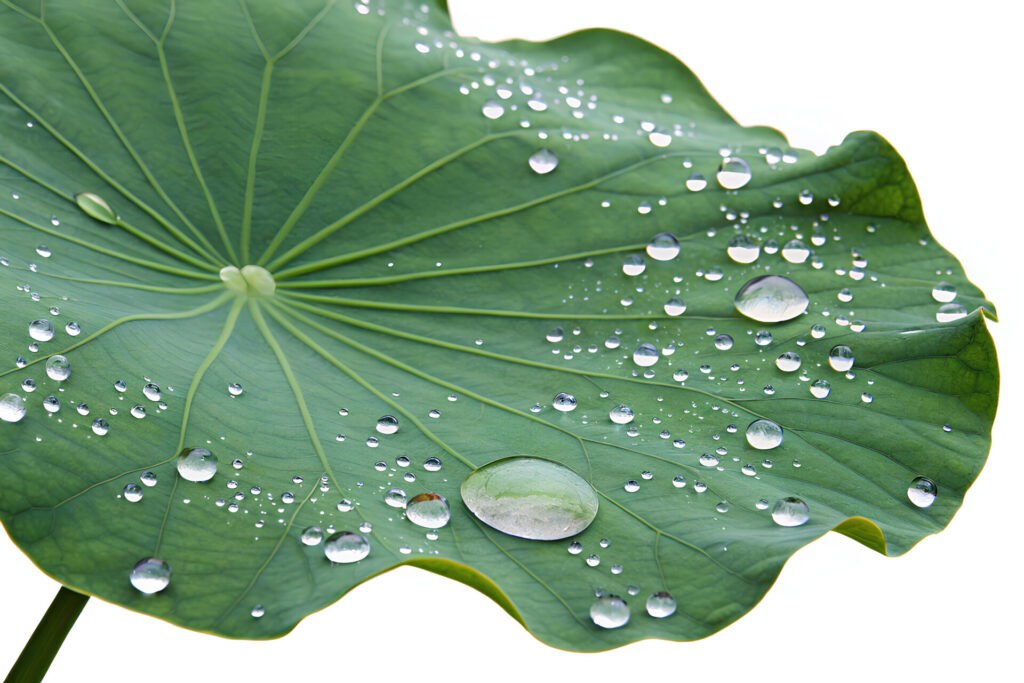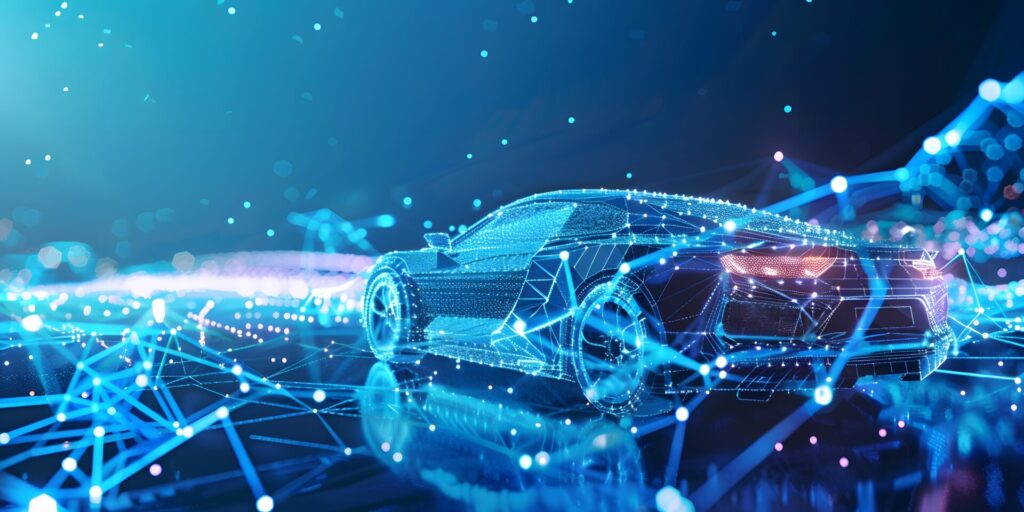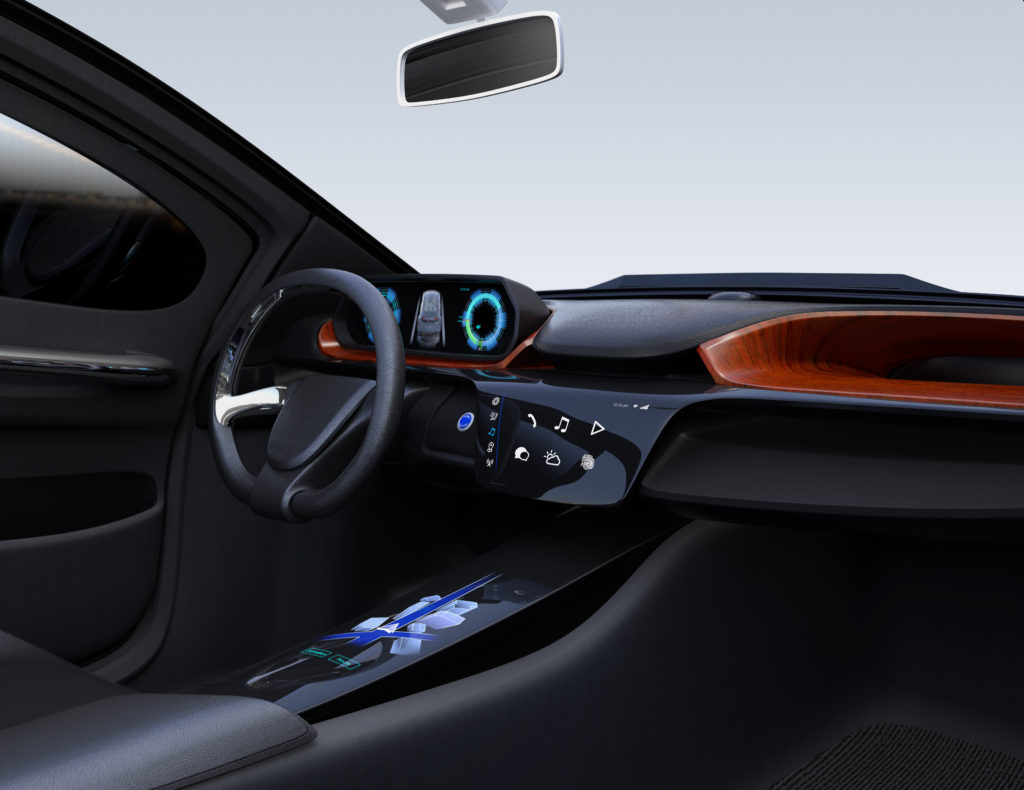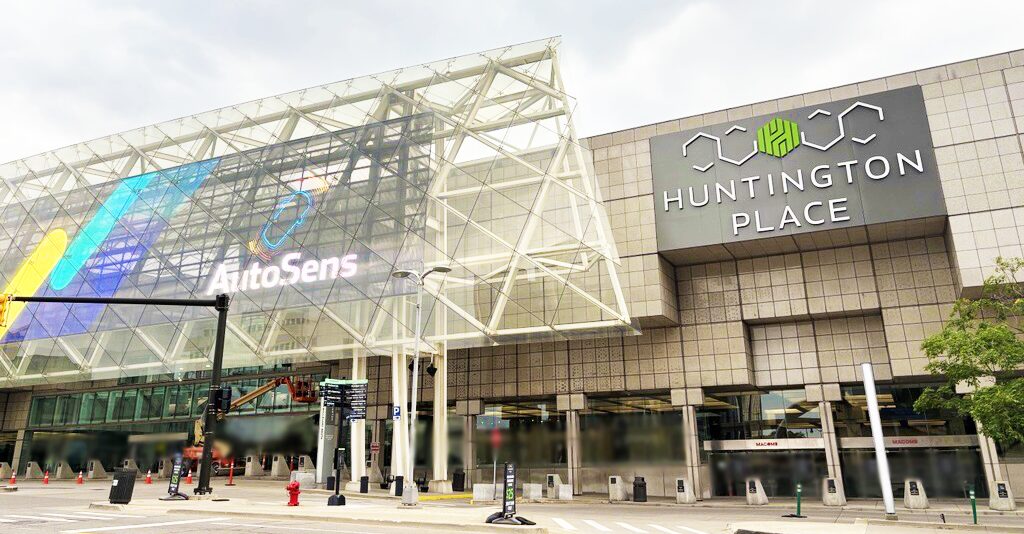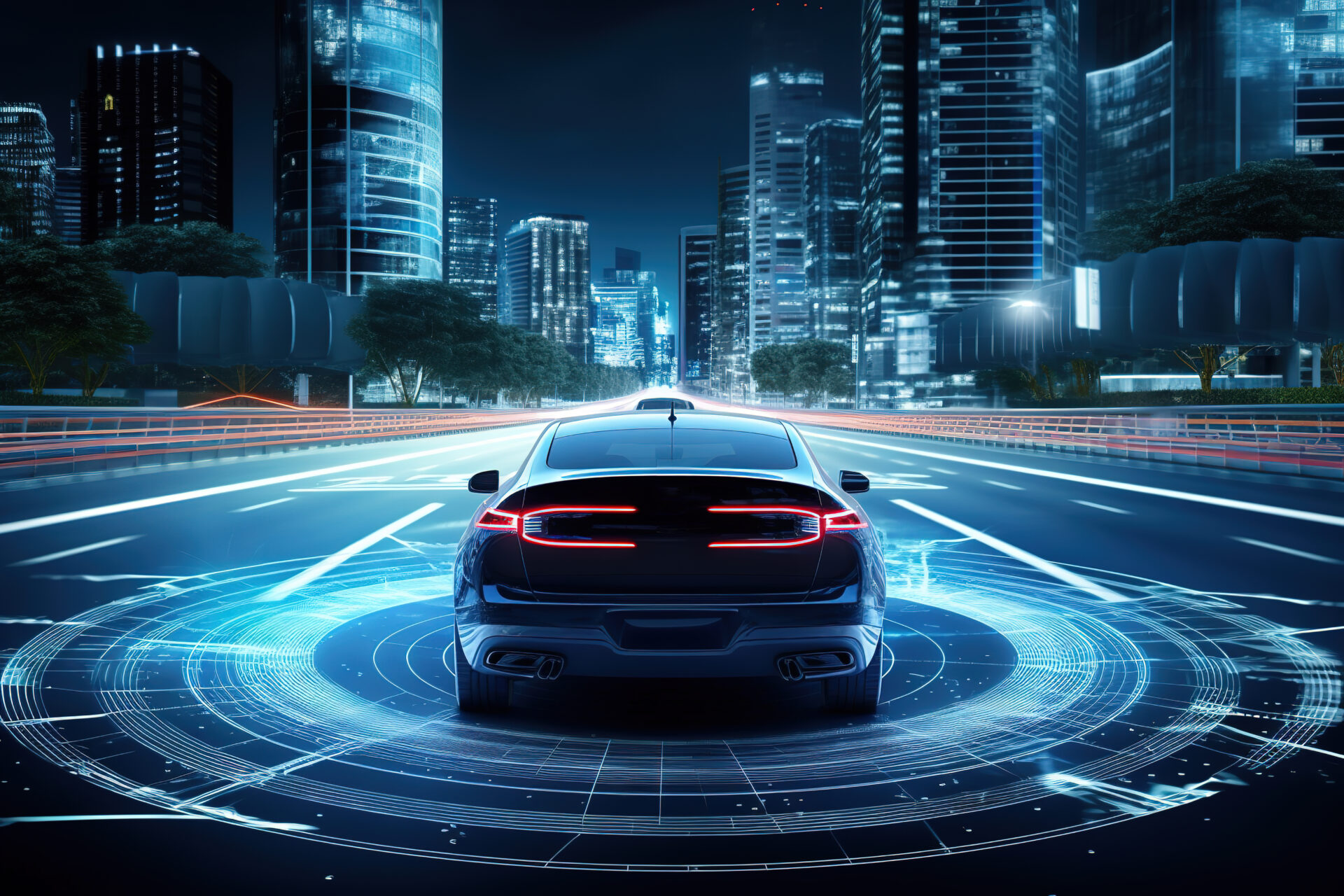
- 光学関連
LiDARの高性能化・小型化を実現するデクセリアルズの5つの技術
目次
自動運転技術の市場拡大トレンド
2024年現在、世界の自動車メーカーが自動運転の実現に向けた技術開発に取り組みを続けています。すでに市販されている「人」が主体となって運転するレベル1,2の運転支援者から、「システム」が主体となって運転を行うレベル3以上の車両の本格的な市場投入も近いと予想されています。安全性の面でも、レベル3以上の自動運転車の市場拡大への期待は年々高まっています。
『LiDAR』技術の詳細は、『次世代の車載センサー「LiDAR」の基礎知識)』をご覧ください。
センサーシステム「LiDAR」のメリット
そのレベル3以上の自動運転システムの実現において、非常に重要な役割を果たすと考えられているのが、LiDAR(Light Detection and Ranging)センサー技術です。LiDARは、近赤外線等のレーザー光を使って、周囲の物体や地形の位置を正確に測定する技術で、自動運転車のセンサーシステムの中核として活用が始まっています。センサーシステム 「LiDAR」の優れた点としては、次の5つが挙げられます。
- 高精度な環境認識
LiDARは、360度の範囲でリアルタイムにセンシングを行い、高精度な3D地図の元となる点群データを提供します。リアルタイムに提供される3D地図により、自動運転車は刻々と変化する周囲の環境を詳細に把握し、道路、歩行者、他の車両などを正確に認識することができます。 - 正確な距離の測定
LiDARは、物体との距離を正確に測定することができます。この距離情報は、自動運転車が適切な速度で走行し、適切なタイミングでブレーキをかけるために不可欠です。特に高速道路や複雑な都市環境では、移動する他の車や人、障害物との距離の正確な測定が安全な運転の鍵となります。 - データの詳細さ
LiDARは、高解像度の点群データを自動車に搭載されたコンピュータに提供することが可能です。このデータは、物体の形状や位置を非常に詳細に表現するため、物体の分類や認識に役立てることができ、歩行者と自転車、道路標識と障害物などを区別することができるようになります。 - 地図作成とローカライゼーション
LiDARは、正確な3Dマップの作成と、車両の現在位置を高精度に特定するローカライゼーションにも使用されます。これにより、自動運転車は事前に取得した地図データとリアルタイムのセンサーデータを比較して、自身の位置を特定しながら安全に自車をナビゲートすることができます。
これらの理由から、LiDAR技術は自動運転車の安全性、信頼性、効率性を向上させるために不可欠な技術とされています。
LiDARの普及に向けて
上記のような優れた特性を持つLiDARですが、現時点ではまだ、一部の高級車にしか搭載が進んでいません。それは自動運転車に利用される高性能のLiDARの価格が非常に高く、また装置の小型化にも課題があることが理由です。
今後、LiDARの普及のためには、技術革新によって価格が下がり、小型化していくことが必要となっています。私たちデクセリアルズは、これまで長年にわたって磨いてきた「高精度部品固定」技術や、光を自在に操る材料技術などをLiDARの開発に応用することにより、「高性能化(ハイパフォーマンス)」「小型化」に貢献できると考えています。下の図は、それぞれの課題に対して私たちがソリューションとして提供できる製品群を示しています。
以下、製品タイプごとに解説します。
| チャレンジ | 製品 | ソリューション |
|---|---|---|
| 高性能化 | 接着剤 | 短時間で高精度な固定 |
| 黒色接着剤 | 光学ノイズの低減 | |
| 反射防止フィルム モスアイタイプ | IR領域の光反射を低減、低電力化 | |
| 無機拡散板 | 狙った範囲に光を拡散 | |
| 小型化 | 異方性導電膜 | コネクターの代替 |
数多くのメーカーが採用する高精度部品固定の技術
LiDARの高性能化を貢献する技術の1つ目は、私たちが持つ「高精度部品固定」技術です。デクセリアルズでは、デジタルカメラやスマートフォンに搭載される高性能なカメラを構成する部品を高い精度で接着固定するために、熱やUVなどで硬化する精密接合用樹脂(Smart precision Adhesive, SA)を開発し、多くのお客さまに採用されてきました。デジタルカメラの場合、CMOSイメージ・センサーが搭載される基板と、レンズがはめこまれたレンズユニットを接着固定することで、カメラモジュールとなります。それらの光学部品の接着時に位置や向きがずれると、画像のぼけや画質の低下が起こるため、接着の際には硬化収縮といった熱ストレスを抑える必要があります。当社の精密接合用樹脂は、先の課題に対応すべく低温・短時間で接着できるよう設計されています。またこれらの特長が、お客さまの工程での生産効率の向上に繋がることも、数多く採用頂いている理由と考えています。
光を利用して対象物を検知するLiDARセンサーも、カメラと同様に光学部品を高精度で固定することがパフォーマンスの向上に直結します。下の図は「アクティブ・アライメント」と呼ばれるセンサー向け高精度固定技術のプロセス手順を示しています。アクティブ・アライメントでは、光軸調整を完了させた状態から限りなくズレを少なくするために収縮率を低く抑えたエポキシカチオンタイプの黒色接着剤を用います。センサーの出力を計測しながらレンズユニットの位置・角度を調整、最もパフォーマンスの高いところで赤外線やUVを用いて素早く接着剤を硬化させます。
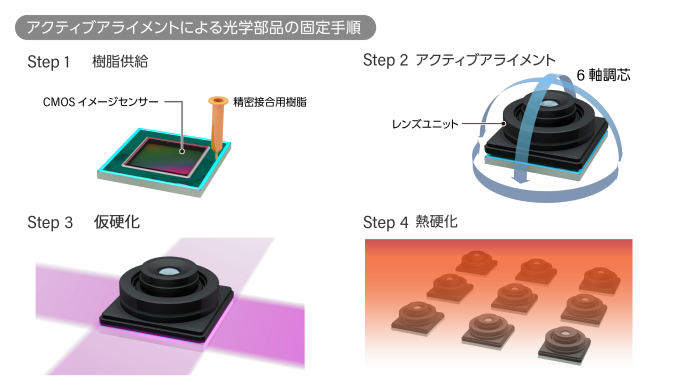
車載用センシング・カメラの接着技術の詳細は『【自動運転の未来】車載用センシング・カメラの高精度を実現する接着技術とは』をご覧ください。
不要反射を減らす「反射防止フィルム モスアイタイプ」
LiDARの高性能化を実現する当社の2つ目の技術が、「反射防止フィルム モスアイタイプ」です。下の図は、LiDARシステムにおける適用箇所を示したもので、本体正面のカバーの内側に貼ることを想定しています。
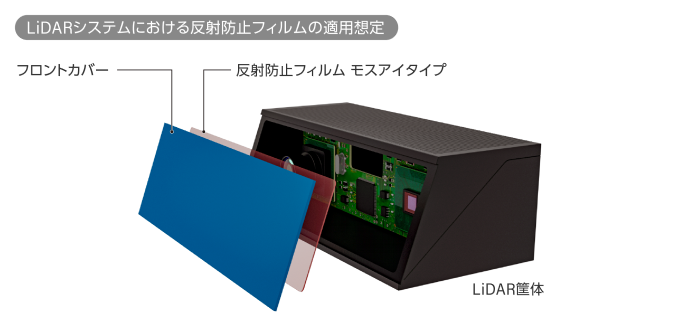
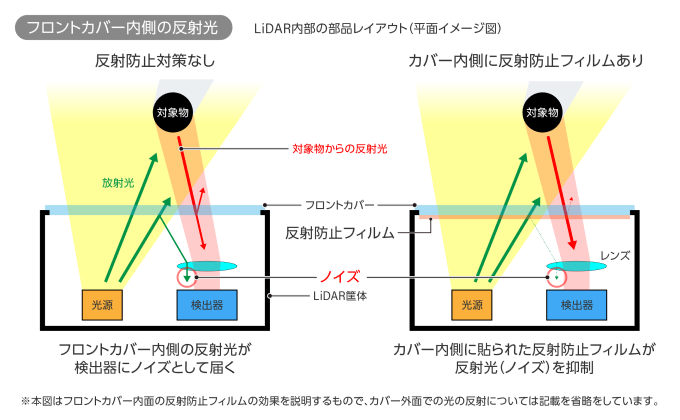
LiDARは光を放射し、対象物に当たって跳ね返ってきた光をセンサーで捉え、その時間差から対象との距離を割り出します。その原理から、できる限りセンサーに届く光を減らさないことが、パフォーマンスの向上につながります。デクセリアルズの開発する反射防止フィルムは、光の反射を限りなく低下させ反射光による光のノイズを抑制します。
なかでも「究極の反射防止フィルム」といえるのが、暗い夜間でも自由に飛び回ることができる昆虫の「蛾」の目の表面構造をフィルム上に再現した反射防止フィルム モスアイタイプです。ディスプレイ用の反射防止フィルムは可視光線の制御を目的としていますが、LiDARに用いられる近赤外線などの見えない光の反射を防ぐ技術も私たちは確立しており、LiDARに反射防止フィルムを組み合わせることで、センサーシステムの精度を向上させることができます。
水蒸気等による曇りを防ぐ防曇機能を持たせたモスアイタイプの反射防止フィルムも開発中です。自動運転車用のLiDARは、外気温とLiDAR内部との温度差や雪などの天候の影響で、LiDAR構造体の内部に発生する曇りで性能が低下することを防ぐために、ドアミラーのようにカバーを温めるヒーターを搭載する必要があると考えられています。それに対して、防曇機能を持たせた反射防止フィルム モスアイタイプをカバーに貼れば、電力供給しなくとも、曇りによる性能の低下を抑制することができると考えています。
モスアイ構造に関する詳細は『モスアイ構造を応用した反射防止フィルム 車載ディスプレイへの展開』をご覧ください
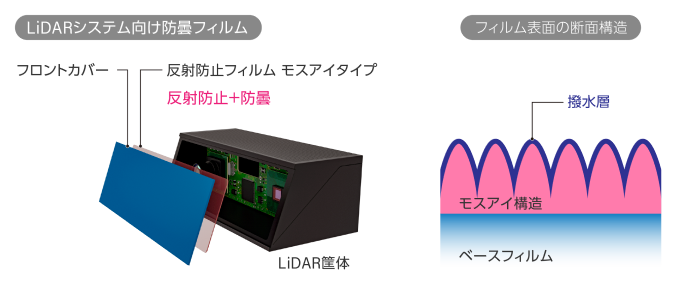
光を吸収する黒色接着剤と黒色コーティング技術
LiDARの高性能化に貢献する3つ目の技術が、当社独自の黒色接着剤と、黒色コーティングです。LiDARの構造体の中に入ってきた光が内部で反射・散乱すると、その反射光や散乱光がノイズとなって測定精度が低下する原因となります。そのため構造体の内部の反射を抑えるために、可能な限り光を吸収する「真っ黒」な表面にしておく必要があります。当社ではデジタルカメラの高精度固定技術の開発とともに、極限まで光を吸収する黒い接着剤と黒いコーティング技術を確立しており、LiDARセンサーへの応用が可能となっています。
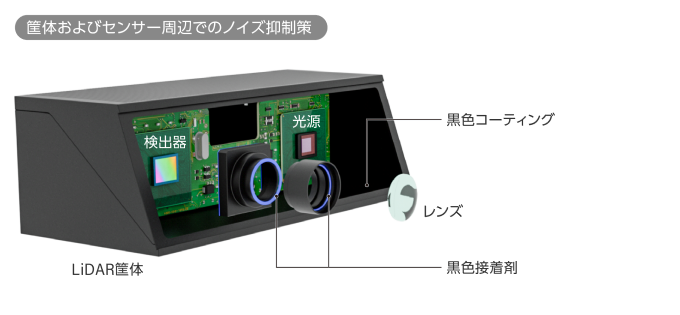
狙った範囲にレーザーの光を拡散する「無機拡散板」
4つ目の次世代LiDAR開発に貢献する当社の製品が、「無機拡散板」です。現在のLiDARは、レーザー光の発光部品をモーターで回転させることで広い範囲の対象物を測距する「メカニカル方式」が主流です。しかし近年、パフォーマンスの向上を目的に、レーザー光を広い範囲に拡散させて放射することで対象物を測距する「フラッシュ方式」と呼ばれるLiDARの開発が進んでいます。デクセリアルズではこれまでに、ビジネスシーンでプレゼンテーションなどに使用されるプロジェクターのレーザー光を拡散させる無機拡散板を開発しており、LiDARの発信部へ応用することで、狙った範囲にセンサーの光を拡散することを実現します。
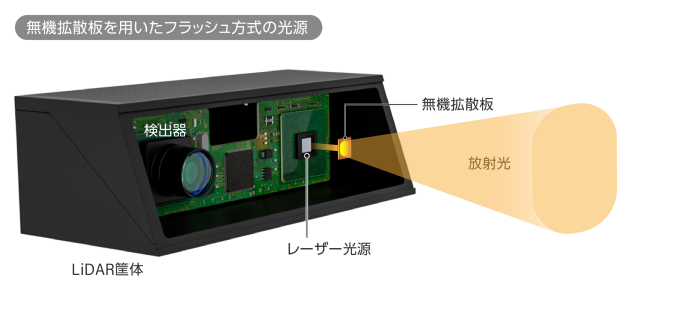
無機拡散板の機能と特徴の詳細は『無機拡散板の機能と特長-ガラス基板上にマイクロレンズを直接形成した光拡散素子』をご覧ください
LiDARの小型化に貢献できる 異方性導電膜(ACF)
LiDARの小型化に貢献できる当社の技術が、異方性導電膜(ACF) です。ACFはICなどの電子部品を基板に実装し、回路を形成するために用いられるフィルム素材です。1977年に製品化してから、現在世界で流通するスマートフォンやタブレットPC、高精細テレビ等の多くのデジタル機器に回路接合材料として使われています。
基板とICチップの端子の間に挟まれたACFは、熱と圧力をかけることで、端子を回路に電気的に接続するとともに、隣接端子間の絶縁を保ち、基板にICチップを固定します。従来のコネクターを用いて基板を接続するのに比べ、小さい面積かつほとんど厚みを持たない接続が可能なため、回路全体の小型化が可能です。
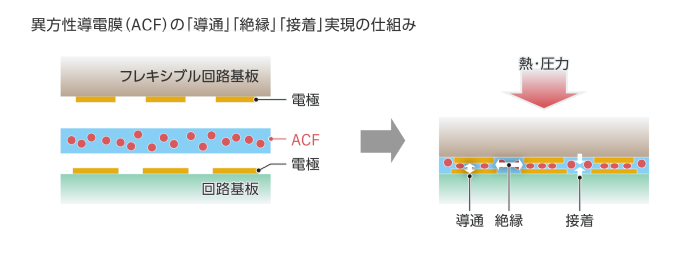
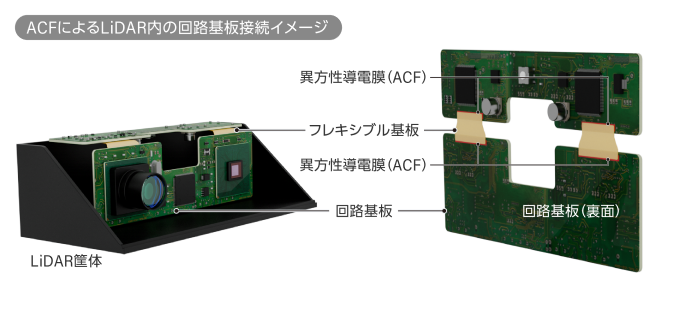
デクセリアルズの技術と製品で次世代LiDARの開発に貢献
次世代LiDARの開発に貢献できる可能性を持つ、デクセリアルズの技術と製品を解説してきました。私たちは前身の会社から60年以上にわたって「高精度部品固定」技術や、光を自在に操る材料技術など、数々の研究開発を行ってきました。未来の自動運転社会の実現においても、私たちが蓄積してきた知見と技術は、多くの分野で貢献できるものと信じています。LiDARなどの自動運転技術の開発に携わる方、当社の技術に興味・関心をお持ちいただけた方は、ぜひお気軽にお問い合わせください。
関連記事
- SHARE

当社の製品や製造技術に関する資料をご用意しています。
無料でお気軽にダウンロードいただけます。
お役立ち資料のダウンロードはこちら
当社の製品や製造技術に関する資料をご用意しています。
無料でお気軽にダウンロードいただけます。
お役立ち資料のダウンロードはこちら


